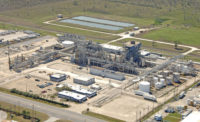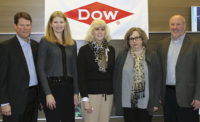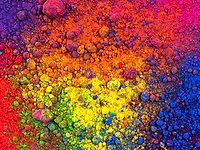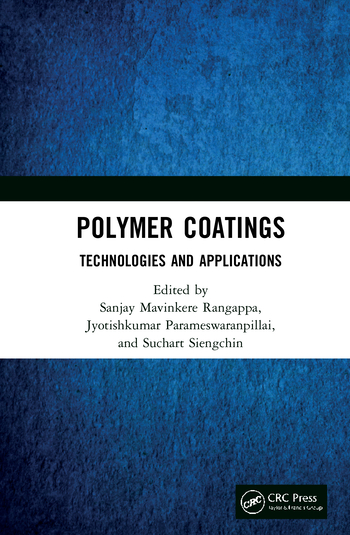An Inside Look at the Global Pigments Market

Hans-Peter Baldus, Head of the LANXESS Inorganic Pigments Group in North America. Photo courtesy of LANXESS.
PCI recently interviewed Hans-Peter Baldus, Head of the LANXESS Inorganic Pigments Group in North America, to discuss the global pigments market and how LANXESS is responding to market drivers and demands. Following are some of the highlights of the interview.
PCI: How has the global pigments market performed in 2015? Are you seeing growth over recent years?
Baldus: Pigment demand has been steadily recovering since the economic downturn. For example, pigment suppliers have benefited from the moderate growth in the housing market in North America since 2014. The growth rates in other regions are varying. Whereas we see solid growth in North America, growth rates in Europe are more moderate. In APAC the growth rate is weakening, but still on a high level. Only South America is showing lower growth rates due to the economic issues in their biggest economies. I expect the climate for pigment consumption to expand with the general health of the global economy. In my view, an average annual growth rate for iron oxide pigments of about 1-3% until 2018 is realistic.
PCI: Can you discuss consolidation in the market – both globally and in North America?
Baldus: In the future, Germany and China will remain the two major production centers for inorganic pigments. The global manufacturing industry for synthetic iron oxide is undergoing a period of consolidation. This effect is most noticeable in China, where a significant number of small- and medium-sized producers have exited the market in the last 24 months. Enforcement of environmental regulations by the Chinese authorities is having a significant impact and will continue to do so in the coming years.
What’s more, we also see that the demand for environmentally friendly and sustainably manufactured products is on the rise, and LANXESS has continued to invest in advanced technologies in response. It remains to be seen how many of the current manufacturers are financially able to make this kind of investment, especially in China. My sense is that the process of consolidation will continue.
In comparison to China and Germany, the share of global pigment production in North America is relatively small. Nevertheless, it is one of the biggest sales opportunities and accounts for about 20% of global sales. Despite a growing product demand, the total capacity of North America remains essentially unchanged.
PCI: What are some of the most common customer requests for pigment technology?
Baldus: In our daily business we are facing frequent customer requests for support in terms of testing and consulting services. Our Global Competence Center in Burgettstown, PA, regularly investigates customer queries under realistic conditions in our laboratories. Information on optimal pigment selection and processing in the various application systems are being requested most frequently. Via color matching, it is possible to determine the optimal pigment selection, thus helping to develop tailored solutions for processing in a variety of coating systems. Here, not only the pigment characteristics but also the potential reaction with other formulation components are considered, which is necessary for the development of starting formulations for pigment mixtures.
PCI: What steps do you take when developing new products?
Baldus: We look at a range of studies, analyze the markets, and of course take into consideration our customers’ growth plans in this process. As mentioned, global demand for iron oxide pigments is growing steadily, but the growth rate differs from region to region and also by application. At the same time, environmental awareness is playing an increasing role. Customers are looking for sustainability in terms of a) environmental and b) long-term business history and quality.
That is why we’ve made the investment in building our new production facility in Ningbo, China, which will create additional capacity for red iron oxide pigments to serve growing demand around the world. It will be a newly developed and highly sustainable iron oxide production process with exhaustive recycling and complete treatment of all by-products. This plant’s optimized products and processes are modern and innovative to serve new market trends and respond faster to increased volatility.
As a manufacturer of iron oxides, it was logical to round out our product portfolio by adding yellowish red pigments, securing long-term supply and offering alternatives to existing grades.
PCI: What challenges do pigment manufacturers face?
Baldus: Pigment users expect excellent color properties and pigments that are lightfast, thermally stable and resistant to weathering and chemicals. Quality continues to be a key competitive factor. Therefore, continuous product research is absolutely necessary to stay ahead of competition. The use of yellow iron oxide pigments, for example, is often limited with respect to low pigment loadings, especially in colorants. This is because of their needle crystal structure and mostly high oil absorption. A newly employed process technique in our facility in Jinshan, China, now ensures the production of advanced yellow pigments that allow for higher pigment loadings. Properly applied, these pigments follow an approximate Newtonian flow, which enables formulators a wider scope and higher flexibility in the recipe creation.
However, just manufacturing a pigment is not enough. A nationwide and global network of sales and distribution partners, an internal network of technical experts globally and long-term solid investment plans are key to offer supply security to customers.
PCI: What is the future direction of the pigment market? What trends will continue?
Baldus: Without a doubt, sustainability is a trend that is here to stay, not just for pigment products, but overall. The global megatrend of urbanization is another main growth driver for our sector -the construction, plastics and coatings industries all benefit from this trend. Urban planning once had an entirely utilitarian focus geared solely towards creating space. Modern approaches are increasingly emphasizing aesthetic features in their plans. By-products (with color) that don’t require extensive maintenance work and are produced sustainably are in greater demand than before.
Finding new applications for existing products is also trending. LANXESS has identified other technical applications that serve as focal points in our business strategy and product development. For example, the product line Bayoxide can be used in a variety of applications like water treatment and purification. Another use for Bayoxide is when high-quality pigment properties are required as a catalyst.
Looking for a reprint of this article?
From high-res PDFs to custom plaques, order your copy today!









